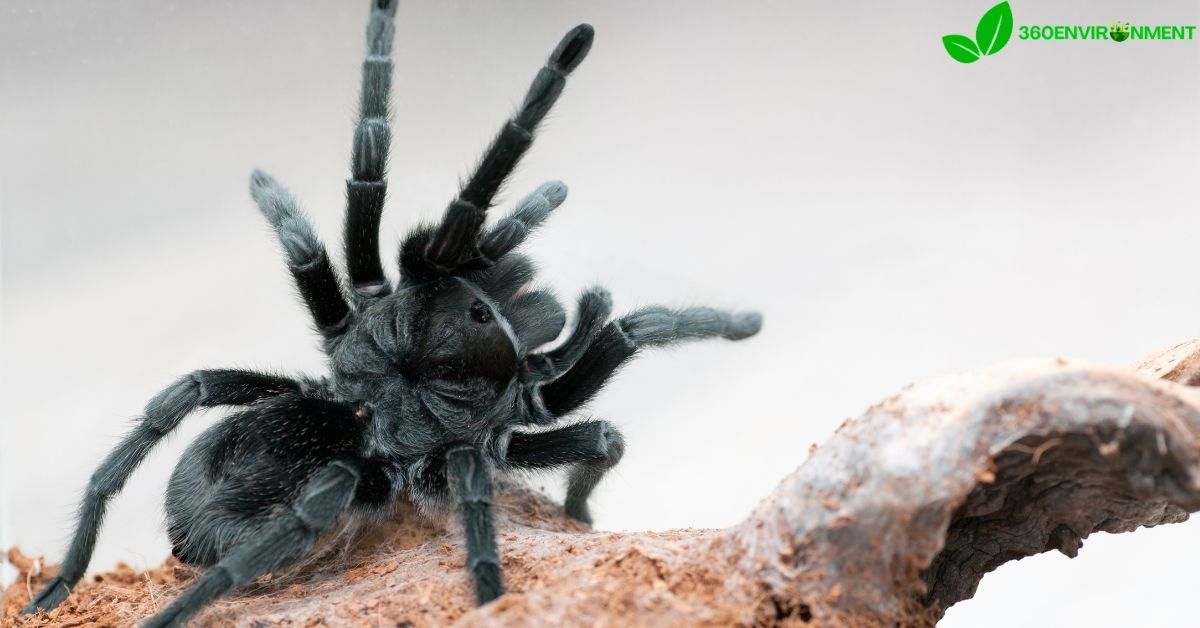The Grammostola pulchra, commonly known as the Brazilian black tarantula, is a terrestrial tarantula native to the grasslands of Brazil and Uruguay. Known for its striking black coloration, docile temperament, and relative ease of care, it has become a popular species among tarantula enthusiasts. Beyond its appeal as a pet, however, the Grammostola pulchra plays an important ecological role in its native habitat, acting as both a predator and prey in the food web of the South American grasslands.
In this article, we will explore the environmental niche of Grammostola pulchra, examining its natural habitat, feeding behavior, ecological role, and the threats it faces in the wild. We will also discuss the conservation efforts being made to protect this species, which is increasingly threatened by habitat loss and the pet trade.
1. Overview of Grammostola pulchra: The Brazilian Black Tarantula
The Grammostola pulchra is a member of the Theraphosidae family, which includes some of the largest and most well-known tarantulas in the world. While many tarantulas are known for their vivid colors, the Grammostola pulchra stands out for its solid black appearance, which gives it a sleek and elegant look. This species is native to the southern regions of Brazil and Uruguay, where it inhabits grasslands and scrublands.
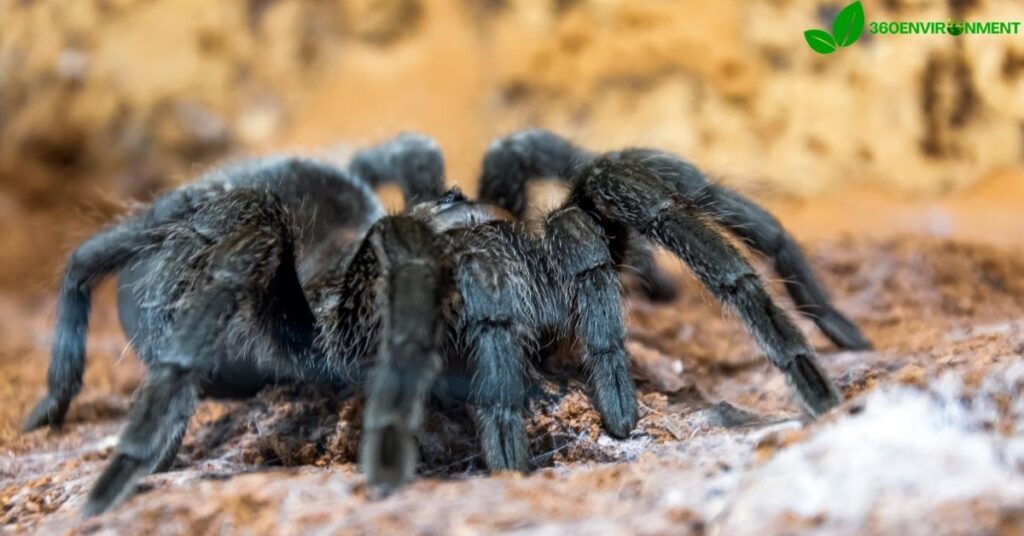
1.1. Physical Characteristics
The Grammostola pulchra is a medium to large tarantula, with an adult leg span of around 6-7 inches (15-18 cm). Its most distinctive feature is its jet-black exoskeleton, which is covered in fine velvety hairs. This black coloration is consistent across its body and legs, although younger specimens may display a lighter brown or gray color before darkening as they mature.
- Exoskeleton and Hairs: The hairs on the body of the Grammostola pulchra are known as setae, which serve a variety of functions, including sensory perception and defense. Like other tarantulas, the Grammostola pulchra has urticating hairs on its abdomen, which it can release as a defense mechanism if threatened.
- Size and Growth: This species is relatively slow-growing compared to other tarantulas, with males typically reaching maturity around 4-5 years, while females may take even longer. Females are also longer-lived than males, with lifespans of up to 20 years in captivity, whereas males typically live for only a few years after reaching maturity.
1.2. Temperament and Behavior
One of the reasons the Grammostola pulchra is so popular in the pet trade is its calm and docile temperament. This species is known for being tolerant of handling, making it a favorite among beginner tarantula keepers.
- Defensive Behavior: Despite its calm nature, the Grammostola pulchra can display defensive behavior when it feels threatened. When provoked, it may kick urticating hairs from its abdomen as a form of defense. However, it rarely bites unless it is severely stressed.
- Burrowing Behavior: In the wild, the Grammostola pulchra is a fossorial species, meaning it spends much of its time in burrows. These burrows provide protection from predators and extreme weather conditions, as well as a place to ambush prey. In captivity, providing deep substrate for burrowing is essential to replicate its natural habitat.
2. Habitat and Geographic Distribution
The Grammostola pulchra is native to the grasslands and scrublands of southern Brazil and Uruguay. These regions are characterized by temperate climates, with warm summers and mild winters. The tarantula thrives in open, grassy areas where it can create burrows and hunt for prey.
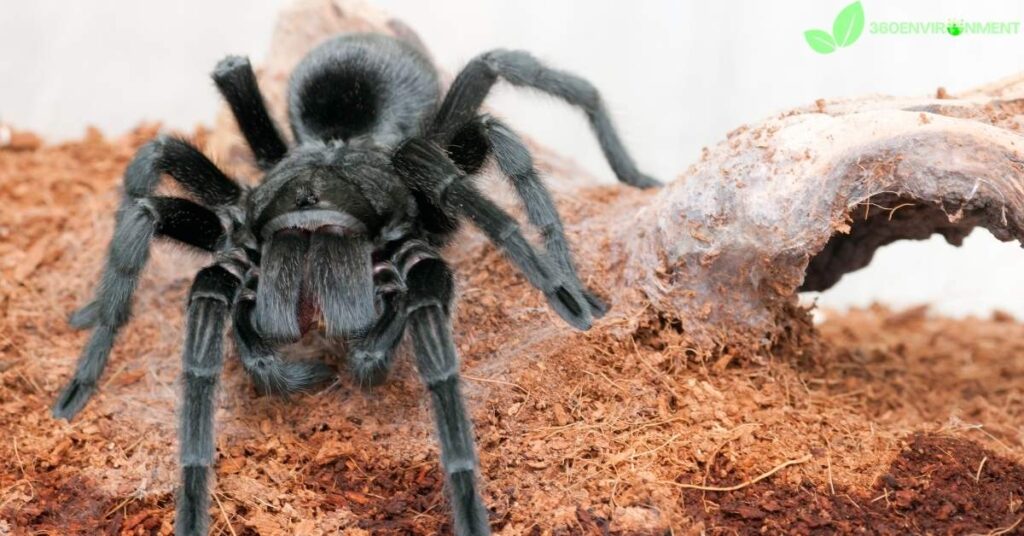
2.1. Grasslands of Brazil and Uruguay
The native habitat of the Grammostola pulchra is the vast grasslands, also known as the Pampas, that stretch across southern Brazil and northern Uruguay. These ecosystems are dominated by grasses and shrubs, with few trees and relatively flat terrain.
- Climate: The grasslands where the Grammostola pulchra lives experience seasonal temperature variations, with warm summers and cooler winters. Rainfall is moderate but can vary significantly depending on the region and season. These environmental conditions shape the behavior and life cycle of the tarantula, influencing its activity levels, reproduction, and feeding behavior.
- Burrowing Habitats: The Grammostola pulchra relies on its ability to dig and maintain burrows to survive in the grasslands. Burrows provide shelter from predators, extreme temperatures, and dry conditions. In some cases, the tarantula may take over an abandoned burrow or create its own by digging into soft soil or under rocks and debris.
2.2. Adaptations to Grassland Life
The Grammostola pulchra has several adaptations that allow it to thrive in the open grasslands of Brazil and Uruguay. Its burrowing behavior, nocturnal activity patterns, and camouflage all help it survive in an environment where it must avoid both predators and extreme weather conditions.
- Camouflage: The dark coloration of the Grammostola pulchra helps it blend into the shadowy recesses of its burrow and the surrounding landscape. At night, when it emerges to hunt, its black exoskeleton makes it difficult for predators to spot.
- Nocturnal Activity: Like many tarantulas, the Grammostola pulchra is primarily nocturnal, meaning it is most active at night. This behavior allows it to avoid the heat of the day and reduce its exposure to predators. At night, the tarantula leaves its burrow to hunt for prey, using its keen sense of touch and vibration to detect the movements of insects and small animals in the grass.
3. Diet and Feeding Behavior
The Grammostola pulchra is a carnivorous predator that relies on a diet of insects and other small animals. Its feeding behavior is typical of tarantulas, involving ambush tactics and the use of venom to immobilize its prey.
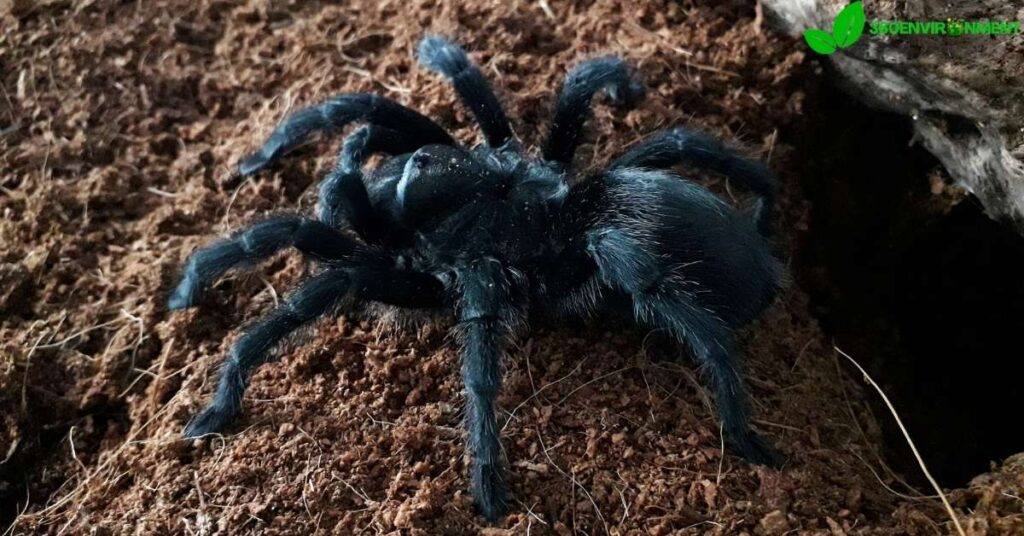
3.1. Hunting and Feeding in the Wild
In the wild, the Grammostola pulchra is an opportunistic feeder, consuming a wide variety of invertebrates and small vertebrates. Its diet primarily consists of insects such as crickets, grasshoppers, beetles, and moths, but it may also feed on small reptiles, amphibians, or even other spiders if the opportunity arises.
- Ambush Predation: The Grammostola pulchra is an ambush predator, meaning it waits for prey to come within striking distance rather than actively hunting it down. The tarantula typically remains hidden in its burrow or under debris until it detects the vibrations of an approaching prey item. It then quickly lunges forward to grab the prey with its fangs.
- Venom and Digestion: Once the Grammostola pulchra has captured its prey, it uses its venom to immobilize and subdue the victim. The venom contains enzymes that help break down the prey’s tissues, allowing the tarantula to consume its liquefied body. Like other spiders, the Grammostola pulchra can only ingest liquid food, so it relies on its venom to pre-digest solid prey.
3.2. Feeding Behavior in Captivity
In captivity, the diet of the Grammostola pulchra is similar to its natural diet, consisting mainly of crickets, mealworms, and other commercially available feeder insects. It is important to provide a varied diet to ensure the tarantula receives all the necessary nutrients for growth and development.
- Feeding Frequency: Juvenile Grammostola pulchra tarantulas are typically fed more frequently than adults, as they are growing rapidly and need more energy. Adults may only need to be fed once every week or two, depending on their size and activity level.
- Feeding in Burrows: In captivity, it is essential to replicate the tarantula’s natural environment by providing opportunities for burrowing. A Grammostola pulchra that feels secure in its burrow will exhibit more natural feeding behaviors, emerging at night to ambush prey just as it would in the wild.
4. Ecological Role of Grammostola pulchra in the Grassland Ecosystem
As a predator, the Grammostola pulchra plays a crucial role in controlling insect populations in its native grassland habitat. By preying on a variety of invertebrates, it helps maintain the balance of the ecosystem and contributes to the overall health of the grassland environment.
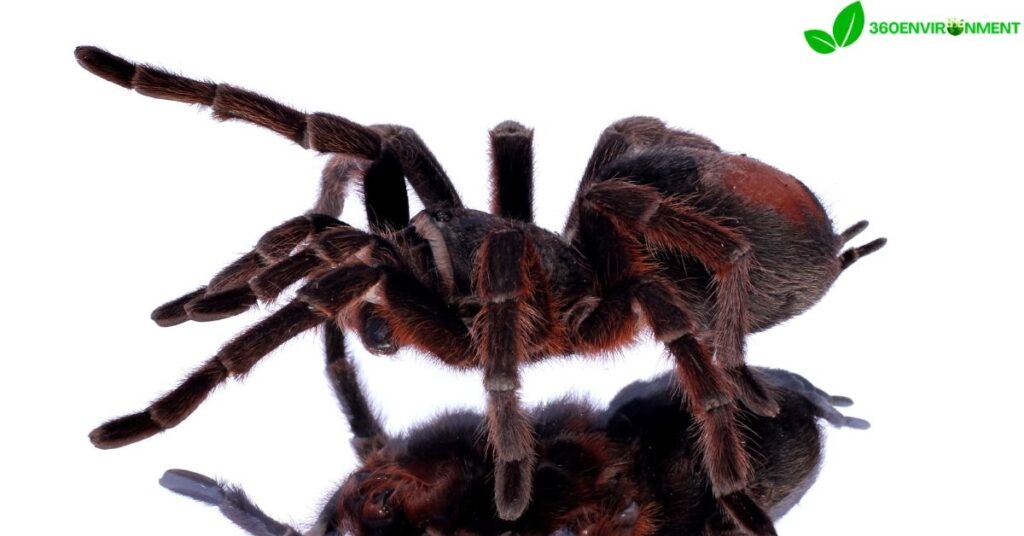
4.1. Predator-Prey Dynamics
The Grammostola pulchra is an apex invertebrate predator in its ecosystem, meaning it has few natural predators and sits near the top of the food chain for invertebrates. Its primary role in the ecosystem is to regulate the populations of the insects and other small animals it preys upon.
- Insect Population Control: By consuming large numbers of insects, the Grammostola pulchra helps keep insect populations in check, preventing them from becoming too numerous and damaging the vegetation. This is especially important in grassland ecosystems, where overgrazing by insects can have a significant impact on plant health and soil stability.
- Impact on Other Invertebrates: In addition to insects, the Grammostola pulchra may occasionally prey on other spiders and invertebrates. This predatory behavior helps maintain a balance between different species of invertebrates, ensuring that no single species becomes dominant in the ecosystem.
4.2. Role as Prey
While the Grammostola pulchra is a formidable predator, it is also prey for larger animals, including birds, reptiles, and mammals. In particular, ground-dwelling birds and small mammals may prey on young or vulnerable tarantulas.
- Predation Pressure: The Grammostola pulchra faces predation pressure from a variety of animals in its grassland habitat. However, its burrowing behavior and nocturnal activity help reduce its risk of being detected by predators.
- Defense Mechanisms: In addition to burrowing, the Grammostola pulchra has several defense mechanisms to protect itself from predators. Its dark coloration helps it blend into the shadows, and it can use its urticating hairs as a form of defense if threatened. These hairs are barbed and can cause irritation to the skin and eyes of predators.
5. Threats to Grammostola pulchra: Habitat Loss and the Pet Trade
The Grammostola pulchra faces several threats in the wild, primarily due to habitat loss and collection for the pet trade. While it is not currently listed as endangered, its population is declining in some areas due to these pressures.
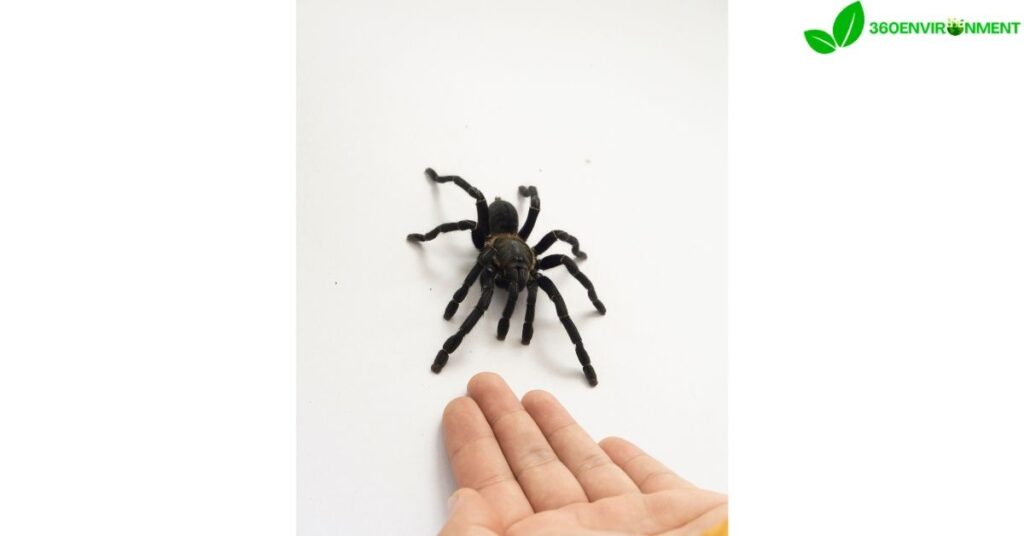
5.1. Habitat Loss
The grasslands of Brazil and Uruguay, where the Grammostola pulchra is native, are increasingly being converted for agriculture and urban development. This loss of habitat is one of the primary threats to the species in the wild.
- Agricultural Expansion: In many parts of South America, grasslands are being cleared for cattle ranching, soy production, and other agricultural activities. This destruction of natural habitats reduces the available space for species like the Grammostola pulchra to live and hunt.
- Urbanization: Urban development is another factor contributing to habitat loss for the Grammostola pulchra. As cities expand, grasslands and scrublands are being replaced with buildings, roads, and other infrastructure, further reducing the species’ natural habitat.
5.2. Collection for the Pet Trade
The Grammostola pulchra is highly sought after in the exotic pet trade due to its calm temperament and striking appearance. While captive breeding programs exist, illegal collection from the wild remains a concern.
- Impact of Collection: The collection of wild Grammostola pulchra tarantulas for the pet trade can have a significant impact on local populations. Removing individuals from the wild reduces the breeding population and disrupts the natural balance of the ecosystem.
- Captive Breeding Programs: To reduce the pressure on wild populations, many tarantula enthusiasts and breeders advocate for the use of captive-bred specimens in the pet trade. Captive breeding programs help ensure that individuals are not taken from the wild and allow the species to thrive in captivity without contributing to its decline in nature.
6. Conservation Efforts and the Future of Grammostola pulchra
Efforts to conserve the Grammostola pulchra focus on protecting its natural habitat and promoting sustainable practices in the pet trade. While the species is not currently listed as endangered, continued habitat destruction and illegal collection could put it at risk in the future.
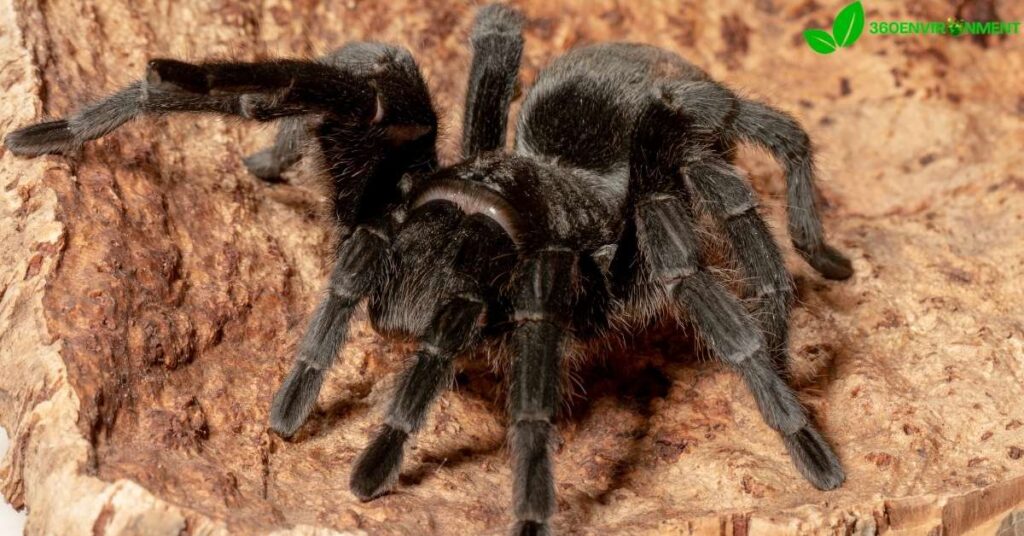
6.1. Habitat Protection and Restoration
Protecting the grasslands and scrublands where the Grammostola pulchra lives is essential for ensuring the long-term survival of the species. Conservation organizations are working to establish protected areas and restore degraded habitats in Brazil and Uruguay.
- Protected Areas: Establishing protected areas in regions where the Grammostola pulchra is found can help safeguard its habitat from further destruction. National parks and wildlife reserves provide a safe space for the tarantula and other native species to thrive.
- Habitat Restoration: In areas where grasslands have been degraded by agriculture or development, habitat restoration efforts are underway. These projects focus on replanting native vegetation, improving soil health, and reducing the impact of invasive species.
6.2. Promoting Sustainable Practices in the Pet Trade
Ensuring that the pet trade is sustainable is another important aspect of Grammostola pulchra conservation. Encouraging the use of captive-bred individuals and cracking down on illegal collection are key strategies for reducing the impact of the pet trade on wild populations.
- Education and Awareness: Educating pet owners and enthusiasts about the importance of captive breeding and responsible ownership can help reduce the demand for wild-caught specimens. By promoting ethical practices in the pet trade, we can ensure that the Grammostola pulchra remains a sustainable and thriving species in both the wild and captivity.
- Legislation and Enforcement: Strengthening legislation that protects wildlife from illegal collection and trade is essential for conserving the Grammostola pulchra. Governments and conservation organizations are working together to enforce existing laws and create new policies that protect tarantulas and other species from exploitation.
Conclusion: The Importance of Protecting Grammostola pulchra
The Grammostola pulchra is a remarkable species that plays an important role in the grassland ecosystems of Brazil and Uruguay. Its ability to regulate insect populations and serve as both predator and prey highlights its ecological significance. However, the species faces several threats, including habitat loss and collection for the pet trade.
By promoting habitat conservation, supporting captive breeding programs, and raising awareness about the importance of sustainable practices in the pet trade, we can help ensure the long-term survival of the Grammostola pulchra. Protecting this species not only preserves its unique beauty but also contributes to the overall health and balance of the ecosystems it inhabits.
Read More: Baby Spider Monkeys: Understanding their Habitat, Behavior, and Role Ecosystem

